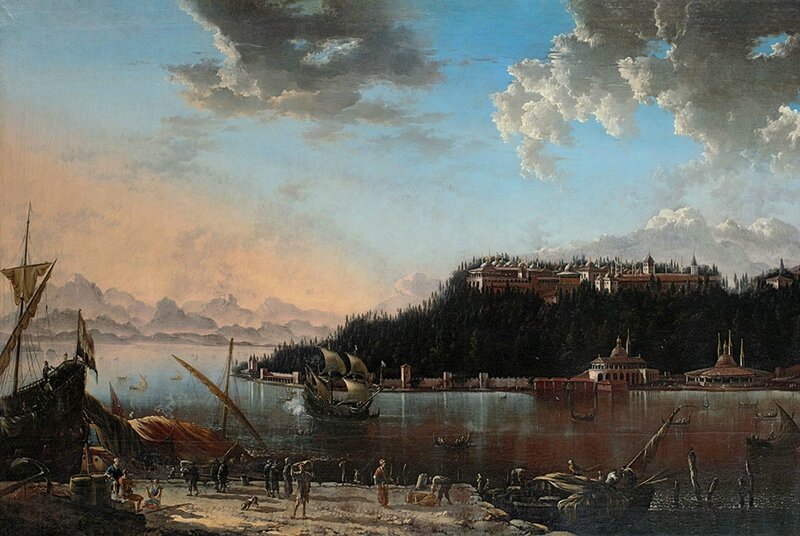Recently restored composition by Hans de Jode on view at Kunst Historisches Museum
Hans de Jode, View of the Tip of the Seraglio with Topkapı Palace, 1659. Canvas, 135 x 221 cm © KHM-Museumsverband.
VIENNA.- Kunst Historisches Museum in Vienna's Point of View # 14 presents a painting with a highly unusual subject matter that has not been on show to the public for several decades. The large-scale, recently restored composition by Hans de Jode (c. 1630 – c. 1663) depicts the tip of the Seraglio with Topkapi Palace (Turkish “Topkapi Sarayi”) in Istanbul (formerly Constantinople). Signed and dated 1659, this view of the main residence of the Ottoman Sultan is first mentioned that very year in the inventory of the collection assembled by Archduke Leopold Wilhelm in Vienna. We do not know, however, if the passionate collector acquired the work on the art market, if he commissioned it, or if the artist dedicated it to him.
We also know very little about de Jode’s life: born in The Hague, the Netherlandish artist eventually moved to Vienna at some as yet undetermined date; our painting was probably produced here. The only thing we do know for certain is that de Jode was married in Vienna in 1662, and that he belonged to the circle of Netherlandish artists with contacts to the Imperial court. Various stylistic influences suggest an earlier Italian sojourn where he produced his first dated paintings.
The composition seems to imply that de Jode actually visited Constantinople; this, however, is not supported by various motifs clearly invented by the artist, for example the fantastic mountains in the background. But we may assume that he based his more-orless realistic renderings of some of the buildings on extant templates. The great metropolis on the Bosporus, capital of the Byzantine Empire until 1452 when it became the seat of the Ottoman rulers, attracted numerous European artists, many of whom travelled there as part of a diplomatic embassy. After their return, their drawings informed countless views of the city and the palace that pandered to Europe’s deep fascination with the appearance of these sumptuous buildings and the legendary exotic splendour of the Ottoman court. The painting now in Vienna is a little-known but highly representative example of the Baroque’s love for all things Oriental.
In 2012 the Picture Gallery began a series of exhibitions entitled Points of View, each of which showcases a single exceptional artwork from the collection that is rarely exhibited either due to lack of hanging space or where recent research has revealed interesting new aspects that invite visitors to take a closer look

/https%3A%2F%2Fprofilepics.canalblog.com%2Fprofilepics%2F1%2F0%2F100183.jpg)
/https%3A%2F%2Fstorage.canalblog.com%2F03%2F02%2F119589%2F96711876_o.jpg)
/https%3A%2F%2Fstorage.canalblog.com%2F11%2F31%2F119589%2F94773502_o.jpg)
/https%3A%2F%2Fstorage.canalblog.com%2F20%2F83%2F119589%2F94772815_o.jpg)
/https%3A%2F%2Fstorage.canalblog.com%2F26%2F72%2F119589%2F75604929_o.jpg)
/https%3A%2F%2Fstorage.canalblog.com%2F59%2F60%2F119589%2F26458628_o.jpg)



/http%3A%2F%2Fstorage.canalblog.com%2F83%2F52%2F119589%2F121118785_o.jpg)
/http%3A%2F%2Fstorage.canalblog.com%2F41%2F29%2F119589%2F111966936_o.jpg)
/http%3A%2F%2Fstorage.canalblog.com%2F02%2F06%2F119589%2F111848152_o.jpg)
/image%2F1371349%2F20240426%2Fob_dcd32f_telechargement-32.jpg)